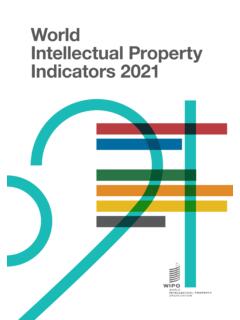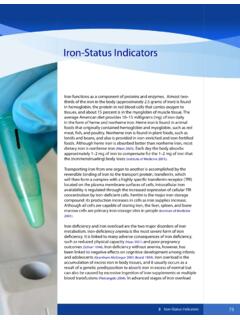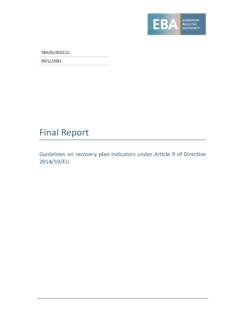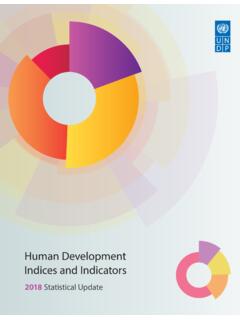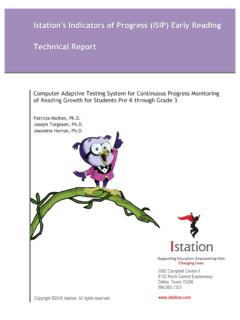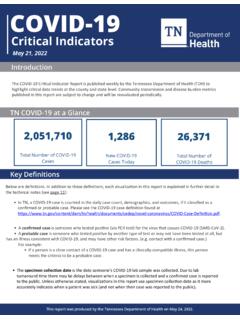Transcription of Governance Indicators: A Users’ Guide - United Nations
1 10/28/04 9:15 AM Page 2. [ A Users' Guide ]. Governance Indicators: 10/28/04 9:15 AM Page 3. 10/28/04 9:17 AM Page i Governance Indicators: A Users' Guide 10/28/04 1:31 AM Page ii Contents iii What data can we get?.. 11. SECTION III. iv Internal How to use this 1 External Users of the Guide ..1 Discrete Criteria for selecting indicator Issues with discrete coding ..12. What is an indicator ?..2 Additive measures ..12. What is Governance ?..3 Composite indicators ..13. What are Governance indicators? ..3 The Normative What are Governance indicators used for?
2 3 The difference between perception and reality ..14. SECTION I. What is the problem? .. 4 Proxy (ii) How can we get data? .. 5. SECTION II. How do I use the data section? .. 16. SECTION IV. How is the information gathered and Golden Rule 1: Use a range of indicators ..17. what effect does this have on the result? ..5 Golden Rule 2: Use an indicator as What are the primary data sources?..6 a first question - not a Primary data sources: Golden Rule 3: Understand an Standards, codes and indicator before you use it ..18. Primary data source: Events-based Primary data source: Narrative reports.
3 7 20. Primary sources, Index of Producers .. 86. Index of 87. Concept - Annex I .. 88. Footnotes .. 90. Who are the sample population?..8. Targeted General Specific geographic areas ..9. Questions - specific to particular .. people or applicable to all respondents? ..9. Ordering of the questions ..10. 10/28/04 1:31 AM Page iii Foreword The United Nations Development Programme and the European Commission place Governance at the heart of our programmes, as do all the signatories of the United Nations Millennium Declaration. There is an increasing demand to measure various aspects of democracy, human rights and Governance .
4 This demand has resulted in a tremendous growth of indicator sources, which are used to measure the performance of governments, institutional quality and people's perception. Well informed debate, programmes and policies are essential to achieve better Governance . This publica- tion will equip users with the wherewithal to make sensible use of sources of Governance indicators. There are other overviews and guidance on Governance indicators, but this is the first publication that brings together how to use' and where to find' material on these sources.
5 The provision of specific notes on the individual sources is particularly helpful. This Guide was prepared through a collaborative effort between UNDP and the European (iii). publication is intended for the general user. It does not necessarily represent the views of UNDP or the European Commission. Matthew Sudders (Eurostat) and Joachim Nahem (UNDP) deserve thanks and appreciation for compiling this timely and useful publication. Georges Nzongola-Ntalaja Pieter Everaers Director, UNDP Oslo Governance Centre Director, Eurostat The Governance indicator sources presented in this publication are not necessarily endorsed or accepted by the United Nations Development Programme and the European Commission.
6 10/28/04 1:31 AM Page iv Preface This Guide provides direction on how to use and where to find sources of Governance indicators. We have only included sources that are live at the time of writing (summer 2004). This is because the focus is on the user, meaning that current data is required. There have been data sources which are no longer live, but which are interesting to the methodologist; however these are beyond the scope of the publication. In compiling the Guide we verified factual information with the producers of each indicator source.
7 However, we welcome users to provide feedback, comments or updates on the publication (please send enquiries to In preparing the Guide we would like to thank colleagues at Eurostat and the UNDP Oslo Governance Centre for their contributions. We are also grateful to the following members of the readers' group used for this publication: Benjamin Allen, Jana Asher, Julius Court, Moustafa Yousef Mohammad Khawaja, Todd Landman, Rajeev Malhotra, Dikokole Mathembiso Maqutu, Gerardo Munck, Pradeep Sharma, Jan-Robert Suesser, Thomas Winderl, and Thomas Wollnik.)
8 (iv). Matthew Sudders Joachim Nahem Eurostat UNDP. 10/28/04 1:31 AM Page 1. How to use this Guide The Guide is written in two parts. The first part pro- The use of statistics and statistical techniques to vides generic guidance for users of indicators, monitor Governance goes beyond the data illustrated with specific examples from the sources included within this Guide . The publica- Governance arena, and takes the reader through tion, however, is not a statistical textbook and the following sections: therefore deliberately excludes discussion on these statistical techniques and the human devel- 1.
9 What is the problem? opment data to which they are most often applied. Equally, with our focus on existing data 2. How can we get data? sources, we do not cover or propose any new indi- cators or methods. 3. What data can we get? 4. How can we use the data? Criteria for selecting indicator sources The source Guide in Part Two only includes publicly In summary, the first part takes the reader from available information. This means that the user can Issue to Information, whereas the second part does always go to the websites of the producers to find the reverse, starting with the information available further information about the source.
10 For inclusion and enabling the reader to interpret that in order in this Guide , we required that data sources meet (1). to focus on the key issue. the following criteria: The second part of the publication is a source Have a clear Governance data aspect Guide , which takes the reader through some specifics about the currently available data Have data available sources, including a snapshot of their methodolo- gy, some example data, their contact information Enable cross-national comparisons and the important assumptions underlying the particular source.










